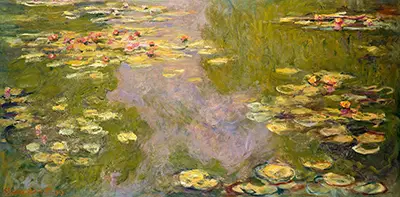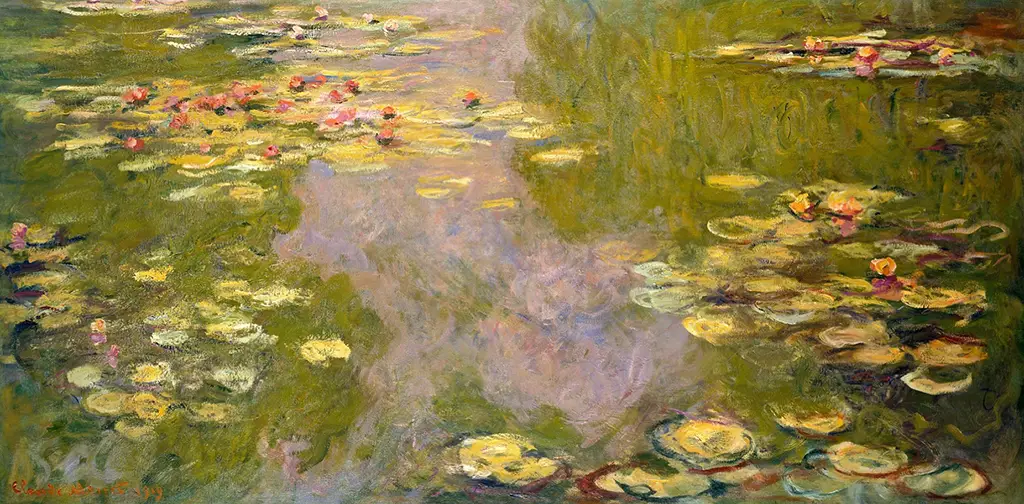The combination of artistic mastery and the natural beauty of his garden would become the perfect combination, and something which helped to promote the work of the Impressionist movement. He would sit for ours in certain positions around his garden, carefully studying what was in front of him, as well as just appreciating the environment around him. There were certain angles that he used time and time again for his work, though in the case of this painting from 1919, he decided to go into greater detail on his water lilies, and leave the rest of the scene entirely cropped out. He did this many times during this period, having previously focused on the japanese bridge that curves over the pond.
Monet would create his water lilies by adding layers of paint, one at a time. Several incomplete artworks from his career have helped us to learn more about the process that he followed. Initially, he would draw simple outlines on the canvas to signify where the plants would be added. This allowed for when they would later move as he sat in his garden. After these initial outlines, there would then be darker colours applied to fill the shapes, then greater detail would be implemented afterwards. The touches of light paint would add the effect of light coming across the scene and he would normally leave these right until the end, to ensure that there was a consistency across the entire artwork.
In total there were around 250 completed paintings by Monet which focused on his water lilies, ith many more studies being constructed over a period of several decades. He never ran out of inspiration from his garden, and found this pond to be his biggest success. Artists will even visit today, hoping to get the same levels of creative spark that he achieved in his own lifetime. To see a living garden protected for future generations is a rare treat when studying art history from previous centuries, and it is something that we should all appreciate, even if unable to make the trip ourselves to Giverny in person. The overall series provides an interesting example of how many different interpretations can be made of the same thing.



